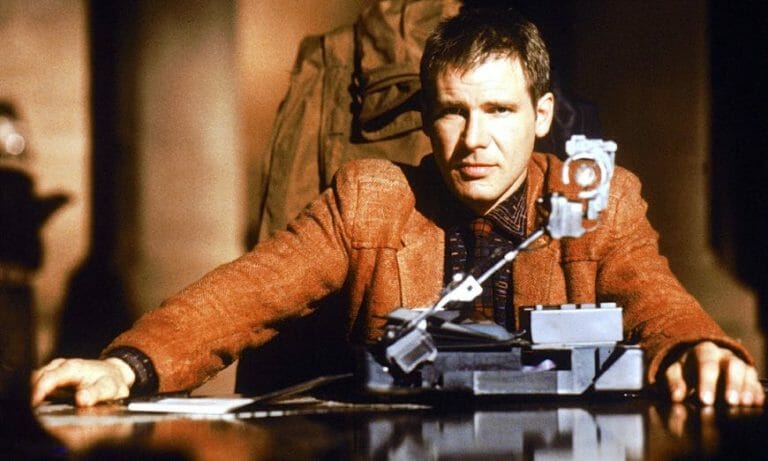By Eric Owusu · April 3, 2015

“The best thing about the future is that it comes one day at a time.”
Which is true, President Lincoln, but it doesn’t keep audiences from wanting to be lunged forward into the future by an engrossing movie.
Audiences love movies set in the future. Classic Science Fiction is always welcomed. Well, at least mostly. Audiences get interesting glimpses through these kinds of films of how writers imagine life will be years, decades, even eons from now. Several Hollywood blockbusters and cult classics alike have been set in the future, earning awards and fans who pick the screenplays apart for deeper or alternative meanings.
1982’s Sci-Fi Noir Blade Runner, written by Hampton Fancher and David Peoples, is one such screenplay. Set in the not too distant future of 2019, Blade Runner interestingly depicts humanity in a state not too different from its current one, asking what it means to be human in an ever-developing world. The movie and its messages are still hotly debated, even as we get closer to it’s depicted date and aren’t that much closer to having mass produced flying cars.
When writing a screenplay of your own that’s set in the future, keep a few of the following aspects in mind.
World Building is MOST Vital in Science Fiction
This part can be the most challenging because as the writer, you can create any and every aspect of your futuristic world that you desire. If you’re like most writers and have a very vivid imagination, narrowing down the most important parts for your screenplay that you come up with to a few futuristic aspects can be daunting.
Pick things that will help best illustrate the themes and messages of your screenplay’s story. Blade Runner is set in a dark, dystopian world where there is new futuristic technology that doesn’t fully exist in the present, but also has decrepit buildings and crumbling infrastructure. The writers went this route to help add a sense of paranoia so that the question of “Are they really human? Am I really human?” would rise more naturally. 2008’s Speed Racer is based on an animated series and is set in the future. It’s a fast-paced action movie that is bright, colorful and stylized to emphasize the speed, action and adrenaline-fueled good time. In your screenplay, paint a picture that accurately depicts the world you want to present. If your future is grim, use grim adjectives to describe characters, settings and objects in their world. Speaking of objects…
Include Interesting Futuristic Objects
Blade Runner’s plot is heavily dependent on the futuristic invention of the Replicants. Replicants are humanoid beings that aren’t always in the know about what they are. As far as I know and as recently as this piece has been published, there aren’t any human-like androids walking around without empathy towards animals.
In your screenplay, set in the future; help your audience see what you want them to see by captivating them with things you want your future world to have. Flying cars, laser guns, androids, artificial intelligence systems that are commonplace and other things that don’t exist for public consumption currently will help transport your audience to your world and set it apart from the one we all currently inhabit.
Define Your Characters and the Challenges They Face
Harrison Ford plays Deckard, a Blade Runner who retires/kills Replicants. He does not want to do so, especially after meeting one of the replicants he has to retire and developing an intimate relationship with her, but he is being forced to. The Replicants, meanwhile, want to live longer, fuller lives like the humans they walk amongst. This screenplay is full of empathetic characters and relatable circumstances for the audience to take interest in and be committed to watching unfold.
Take your time in displaying the characteristics of your main and supporting characters when writing your screenplay. Remember, the audience needs to feel a specific way (positive or negative) for each character to some degree. You have roughly 90+ pages to get audiences invested in who they are, what they’re doing and why they’re doing so. Even in a world set in the future, age-old storytelling techniques drive the story forward, in time and progression.
Also, be sure to include situations where your characters are conflicted and the human story and charactersitics can transcend, causing the characters to make choices that only exist in the futuristic world you’ve let your audience in to observe. Deckard has to kill Replicants, beings who believe they’re human or want to live normal lives, in a world where their duration is predetermined and non negotiable. That is heavy material and can be paralleled with circumstances in the real world. Are you making statements in your futuristic screenplay? Why or why not? If so, what are they? Remember, Science Fiction's backbone is the human characters and story that shine through the foreign environments we are watching.
Enjoy piecing together your futuristic screenplay, one day at a time.